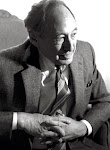It's interesting to note, however, that swine flu, unsurprisingly, comes from "close contact with pigs" – that is, spatial proximity between humans and their livestock.
Swine flu, we could say, is a spatial problem – an epiphenomenon of landscape.
I'm reminded here of a point made recently by geographer Javier Arbona. Referring to the increasingly popular and somewhat utopian idea that, in the sustainable cities of tomorrow, agriculture will have returned to its rightful place in the city center, Arbona asks: "Did everyone think that so much lushness and farming envisioned in the city aren’t going to open up new Pandora’s boxes of infectious diseases and sanitation problems as we come into contact with more manure, more bacteria, and more wild animals that we urbanites are not at all 'naturalized' to?"
More at BLDGBLOG
Track the Flu here
Subscribe to:
Post Comments (Atom)




This a really good and well thought out article. I find it interesting that people seek to control that which they cannot. The possibility of controlling disease outbreaks by architectural design, while interesting as a thought experiment, is absurd. We've already moved our animals to huge farms that pollute our waterways. Regardless of their proximity to our cities, they still have an affect on our ecosystem and thus our cities. I find these ideas of how technology can ultimately solve all our problems fascinating. I think that purveyors of this opinion ultimately forget that humans are only animals. With the singularity we will finally have created something that will transcend our animal nature and thus will have no use for us or our quaint animal ways.
ReplyDelete